Virtualizing Haiku in Parallels Desktop
For Google Code-In 2017, Villyam created a video on how to install Haiku in Parallels Desktop [10 MiB].
Virtual instances of operating systems are perfect for all kinds of testing purposes that need to be done in a safe and isolated environment. Installing Haiku in a virtual machine is a solution for people who do not want to install it on their physical computers, but wish to become familiar with it.
This guide will describe the process of running Haiku on a virtual machine (VM) using Parallels Desktop 13. Parallels Desktop is not fully working with Haiku and needs a workaround. Be sure to follow all the steps to run Haiku.
We will using an anyboot image file - it can be obtained here. Parallels Desktop is available for free as a 14-day trial or $80 for the full version on their website
Go to section:
Running Haiku from an Anyboot image
The following guide will describe installation of Haiku with an Anyboot image on Parallels Desktop.
Step 1. Renaming the Anyboot image
After downloading the Anyboot image, we need to rename the image to make it work on Parallels Desktop.
Open the folder where the Anyboot image is located. Unzip the image, then change the image’s extension from .iso to .hdd
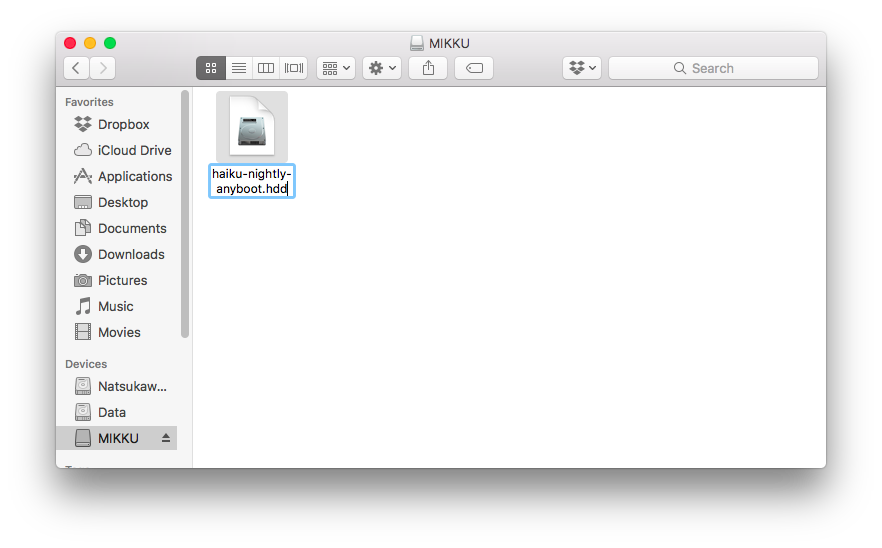
When asked for confirmation, click Use .hdd
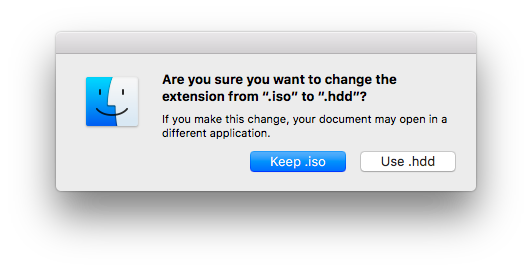
Step 2. Creating a virtual machine
After installing Parallels Desktop and renamed the Anyboot image, we can begin the installation process.
Open the Parallels Desktop application, if you are running Parallels Desktop for the first time, the Installation Assistant will appear. Skip all steps until you are in the Create new window.
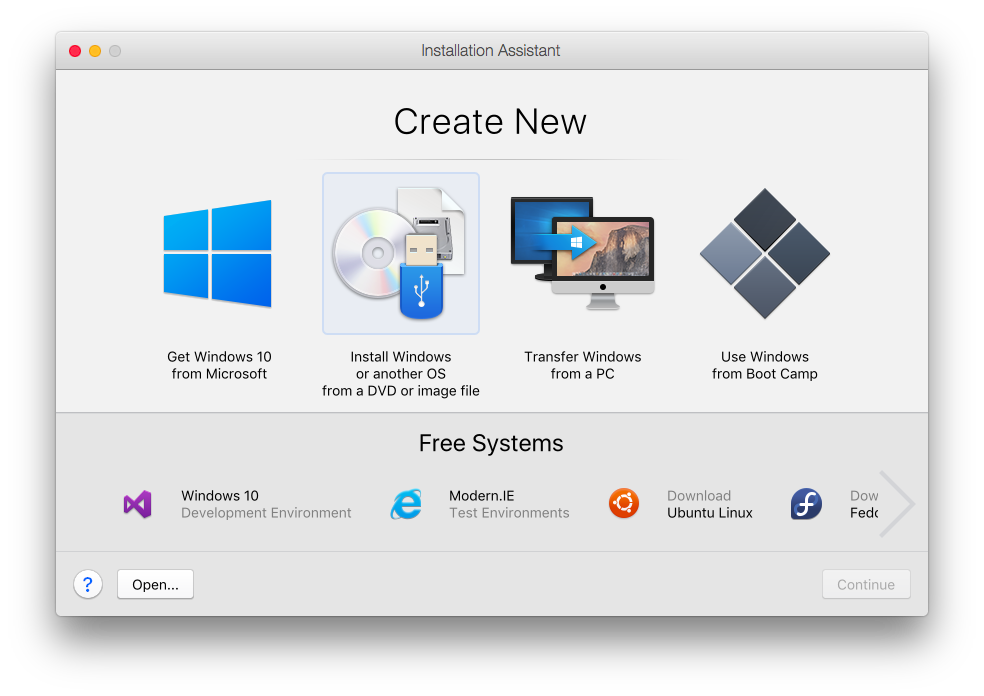
Select the Install Windows or another OS from a DVD or image file option, and then click Continue
Check Continue without a source on the lower-left corner. Then, click Continue once.
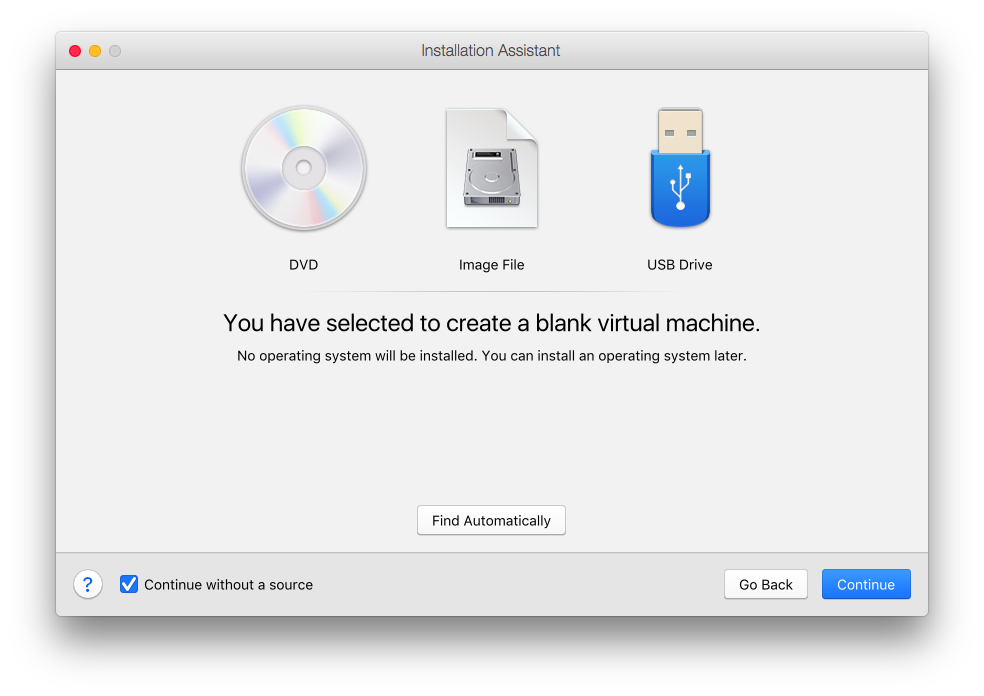
When the Please select your operating system window appears, select Other, then Other again.
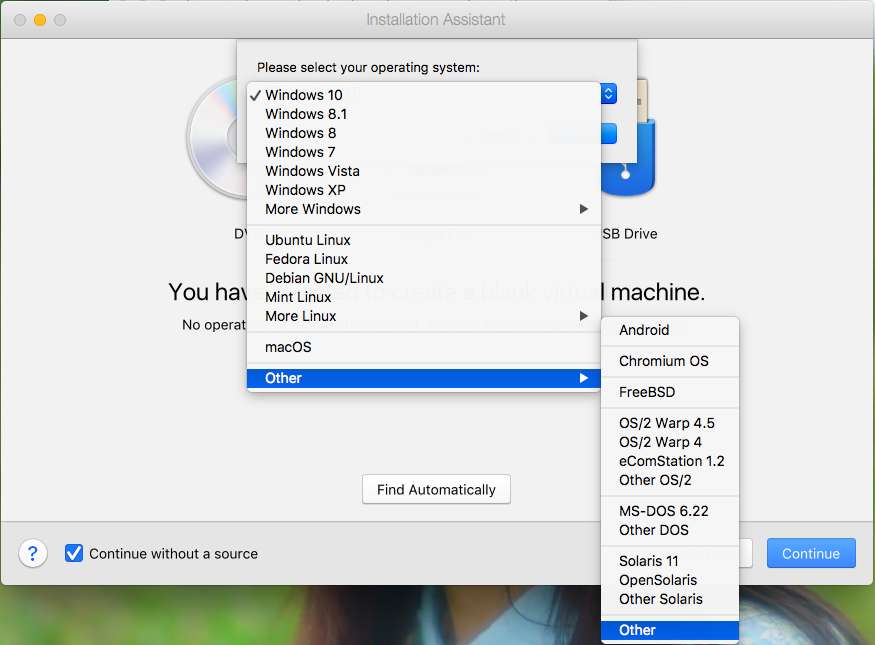
Then, the Name and Location window will appear. Name your virtual machine, and select the location of the virtual machine. Check Create alias on Mac desktop if you want to create an alias on the desktop. Check Customize settings before installation. Then, click Create
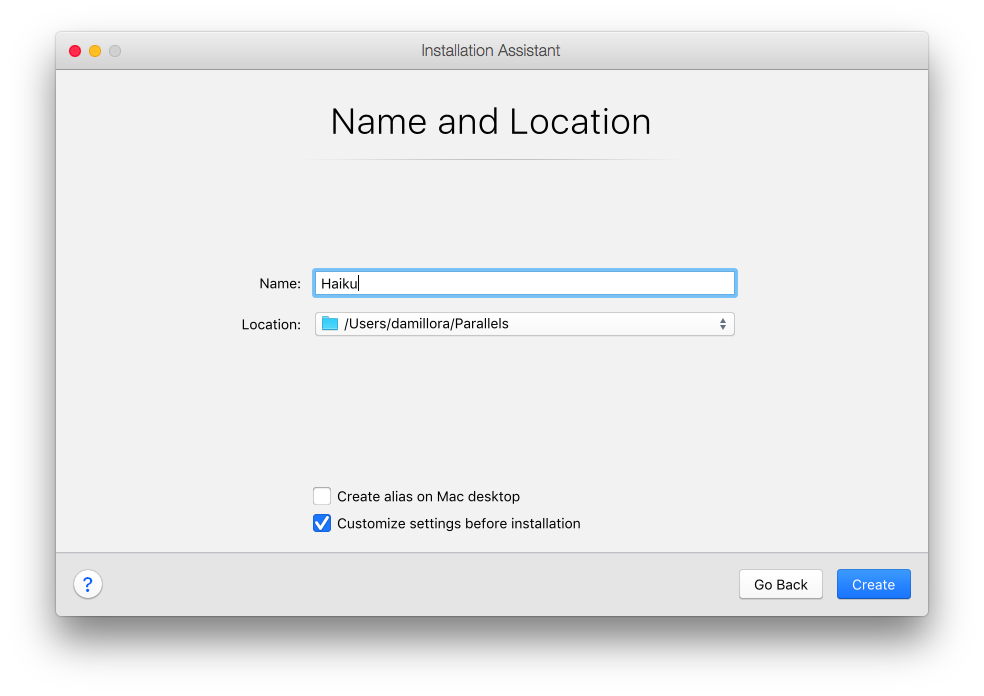
Wait while the virtual machine is being created, and then the Virtual Machine Configuration window will appear, along with a Configuration dialog.
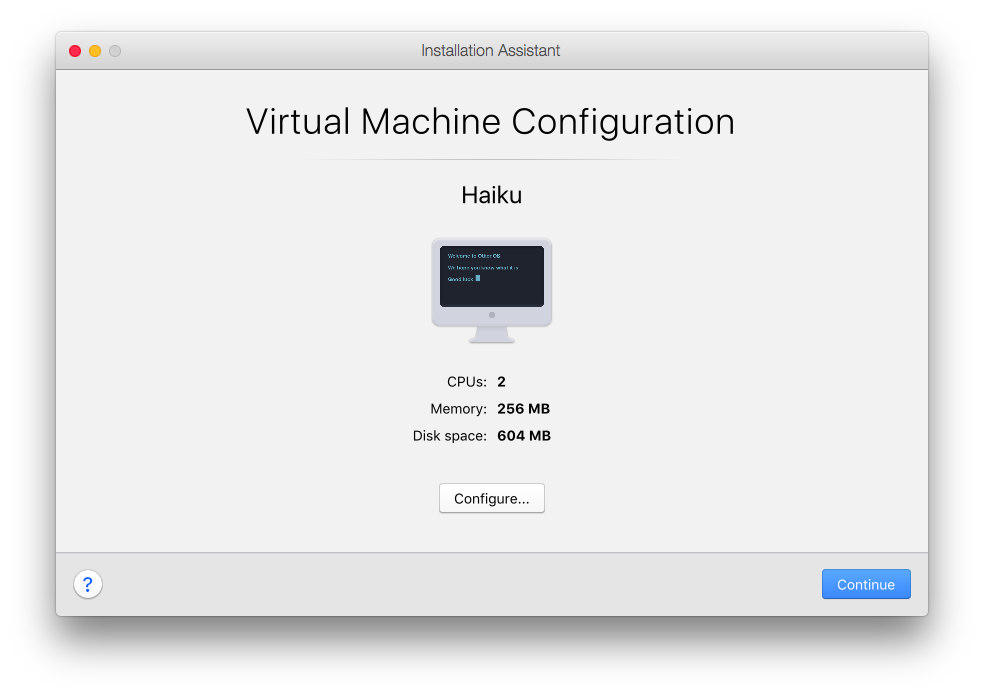
This is the important step to make Haiku run in Parallels Desktop. On the Configuration dialog, click Hardware > Hard Disk. For the source, select the Anyboot image that we renamed.
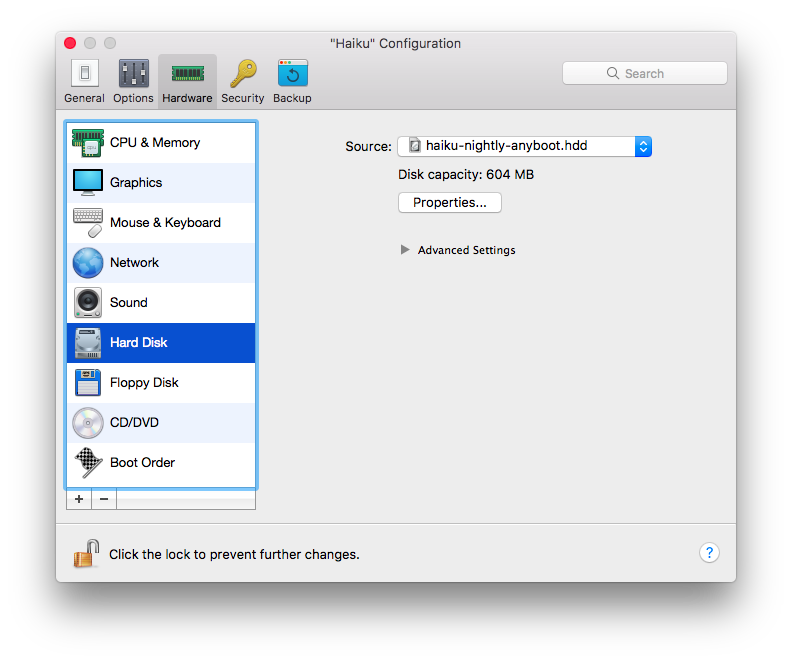
A dialog will appear asking to convert to the new format. Click Convert.

The Configuration window will then shows a notice saying that the specified hard disk image is invalid. As we have converted them, click Yes
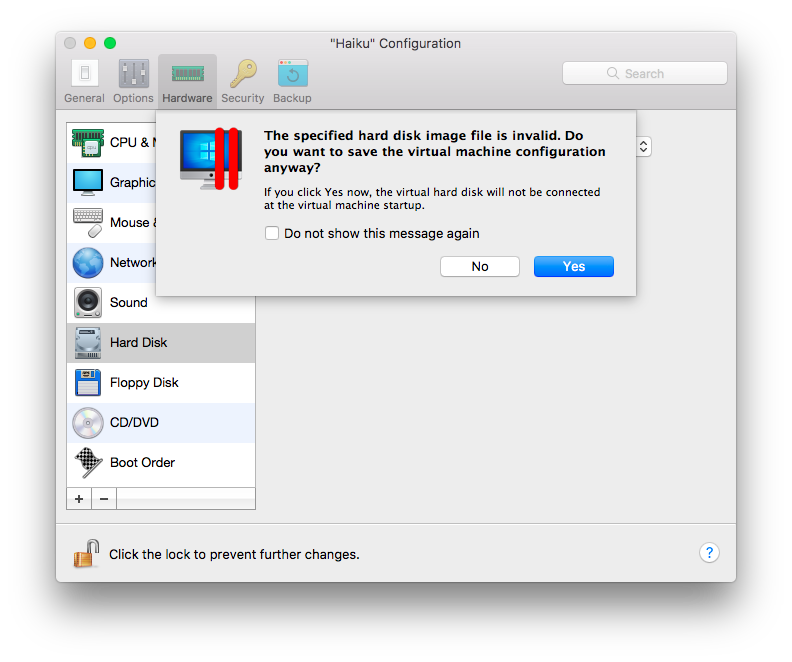
Close the Configuration window, and then click Continue on the Virtual Machine Configuration window.
The virtual machine will start, and congratulations! Haiku is now up and running!
Additional steps
Additional step 1. Configuring the virtual machine
There are a few settings that could be changed to improve performance of Haiku. Remember that you need to divide resources responsibly, depending on your host specification.
We begin by stopping the virtual machine first, if it hasn’t already been stopped yet, by clicking on Actions > Shut Down. After stopping, we can configure the virtual machine by clicking on Actions > Configure…
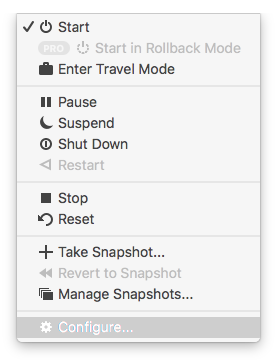
The Configuration window will appear.
The Configuration window allows the user to configure aspects of the virtual machine.
One of the ways to increase performance is changing the video memory assigned to the virtual machine. Click on Hardware > Graphics, and change the memory to a larger amount to increase the amount of video memory assigned. This should allow the GUI to run more smoothly and be more responsive.
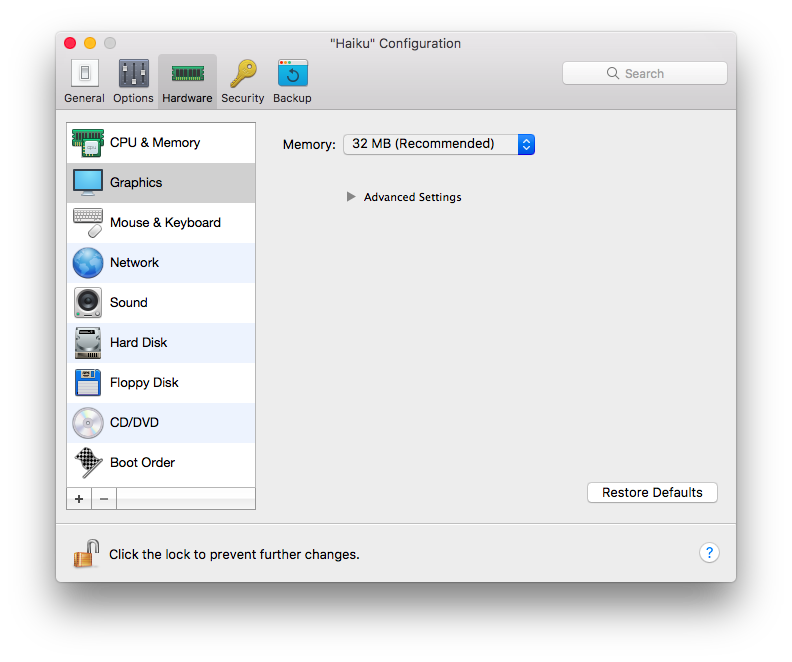
To increase the amount of memory assigned to the virtual machine, click Hardware > CPU & Memory. Then, move the slider to the right, to increase the amount of memory assigned. This could be useful if we needed more memory to compile Haiku, as an example.
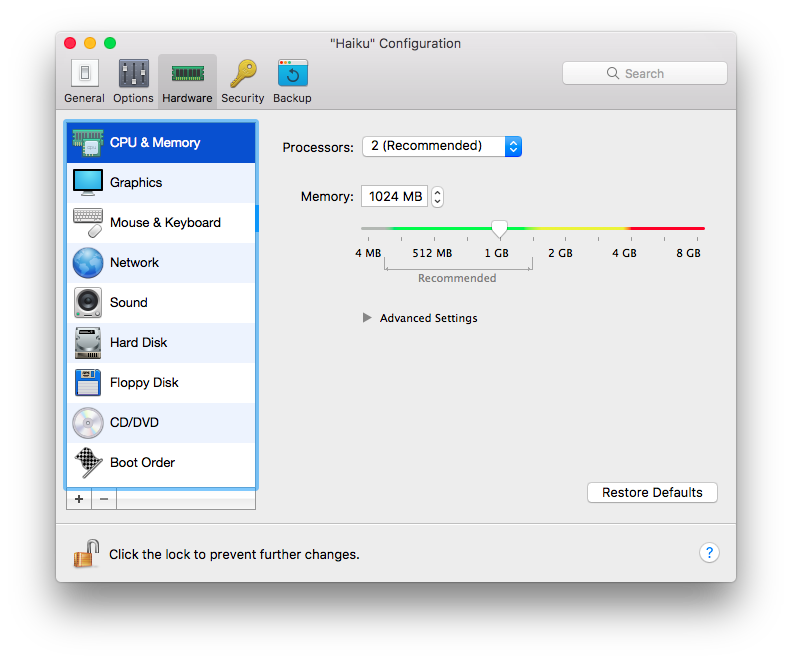
If you are running Parallels on macOS 11, expand click Advanced Settings while still on CPU & Memory. For Hypervisor, choose Parallels instead of Apple. This will improve general performance in the Haiku virtual machine.
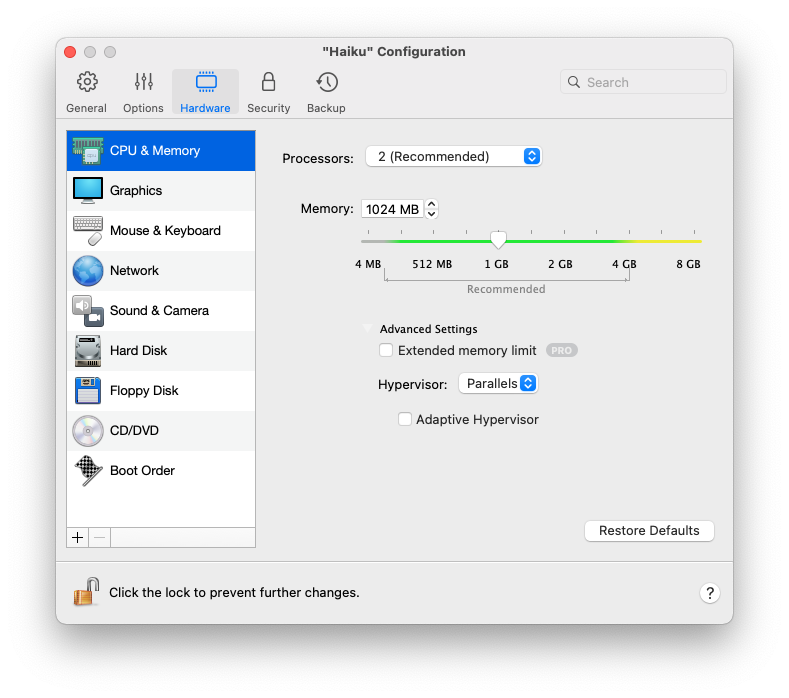
After you are done with configuring, close the Configuration window to return to the virtual machine.
Troubleshooting
Parallels Desktop warns that there is No boot device available and that it is Unable to connect Hard Disk
On the configuration window, make sure your hard disk uses the renamed image.
Parallels Desktop warns that the device still expects data transfer
When booting with ISO or Anyboot images, Parallels will hang on Disk icon. This is a bug in Haiku which can be read about here




